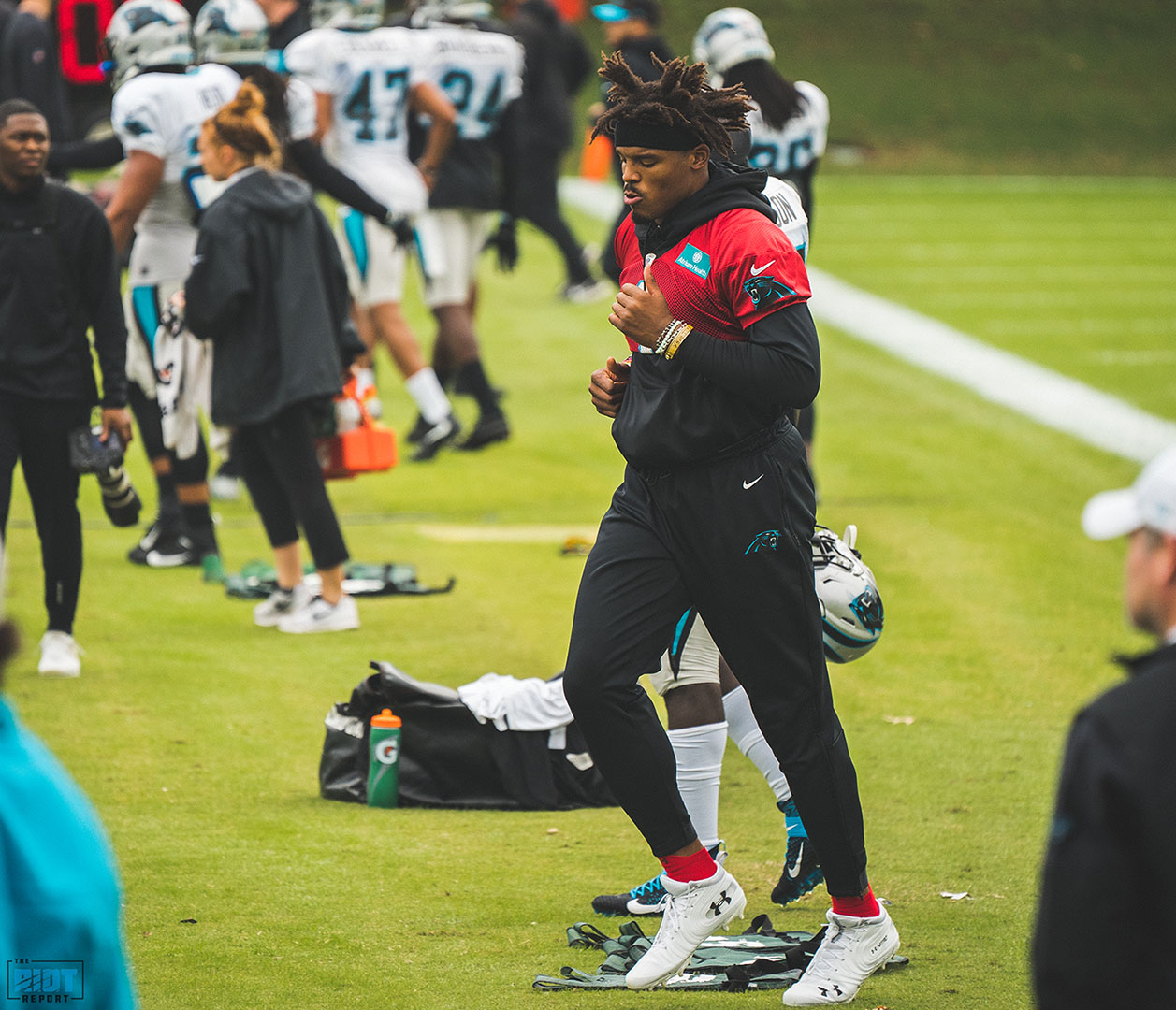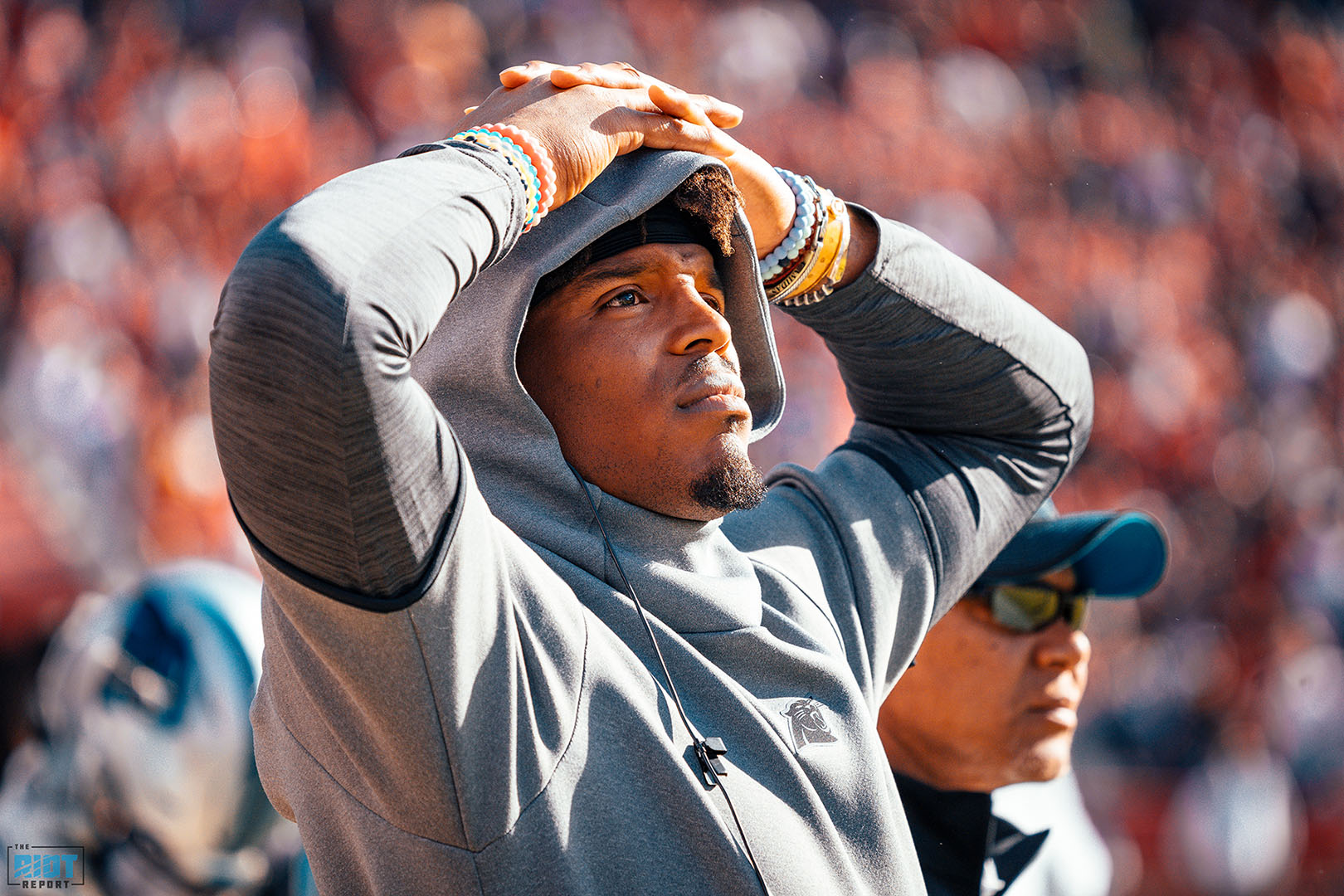After being inactive since Week 2 with a Lisfranc injury, quarterback Cam Newton appeared to be moving forward in his rehab after traveling with the team for the first time this season to San Francisco and going through a warmup routine that included three- and five-step drops and throws to the boundary under the watchful eye of trainers.
But the team announced Friday that Newton, who had worked on the side during practice last week for the first time since his injury but had not been at practice this week, visited Dr. Robert Anderson, who previously had been the head team physician in Carolina, in Green Bay for a second opinion about a foot that has not healed in the general timeline required for an injury of this nature.
The visit was first reported by Josina Anderson.
“I spent a long time speaking with Cam this week and he’s done everything he possibly can in his rehab process to get his foot to 100 percent,” general manager Marty Hurney said via the team website. “Unfortunately, we haven’t reached that point. The next step is for him to go see Dr. Anderson and gather more information.”
Coaches have been coy about the timeline for the team’s franchise quarterback, selected first overall during in 2011, to return – his initial injury was said to be a mid-foot sprain, but a Lisfranc injury has similar symptoms.

QB Cam Newton returned to practice last week and worked on the side with trainers
There are multiple variations and grades of a Lisfranc injury – not placing the Panthers’ franchise quarterback on injured reserve when the injury was first reported by Newton appeared to be a sign that it may not have been as severe as others which forced players to have surgery, which may still be an option, and that he might be able to recover through rest and rehabilitation.
After seven weeks of rest and rehabilitation and the foot still not at 100%, Newton will meet with Anderson today for another opinion.
“A Lisfranc is often mislabeled as a midfoot sprain,” Dr. Anderson said in a 2013 interview. “So a sprain is basically a ligament injury in any part of the body, but in this situation it’s the midfoot. In most cases of athletes, it’s not necessarily a bone injury, but a ligament injury. The ligaments of a midfoot joints rupture and the joints become unstable and shift out of place. … You can have some small bony emulsions or chips injuries occur if the ligaments do pull off.”
“Then these joints become unstable and when they become unstable guys can’t push off. So a lot of the complaints guys have when they leave the football field with a Lisfranc-type injury is that, “Hey I don’t have any push-off or explosion.””
Newton complained about his inability to push off in a YouTube video released on his channel two days prior to the Panthers’ Week 4 win in Houston.
“The question is do they need surgery or not need surgery?” Anderson explained when speaking about the injury. “We see a lot of stable Lisfranc injuries that don’t require surgery. But because the ligaments are still stretched or damaged in some way, it could be 6-8 weeks before a player can come back from even a non-operative Lisfranc sprain.”
“You usually have to stay completely off the foot 6 to 8 weeks after surgery. Then they’re in a boot for six weeks. Then they can begin the rehabilitation process, which can take about three months after that. The non-surgical ones, usually they’re in a boot for anywhere between 2 to 4 weeks and gradually get back into rehab. But, like I said, it could be 6 to 8 weeks before they’re ready to play again.”
That question of needing surgery or not – which would not only end the quarterback’s season, but would plunge his future with the team into doubt with only a year left on the extension he signed in 2015 – will likely be one of the many that Newton is asking Anderson in Green Bay.
This article will be updated with more information as it becomes available.


